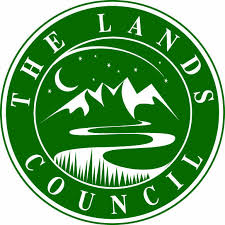Student Contributor -H. Stinger
The Lands Councils mission is to preserve and revitalize Inland Northwest forests, water, and wildlife through advocacy, education, effective action, and community engagement. This organization is fantastic to collaborate with and have a variety of focuses from water restoration to wildlife support. They envision a day when the forests of the Inland Northwest are protected for a diversity of wildlife species and provide communities with a source of plentiful clean water. The Lands Council has a goal of a public that understands the importance of protecting forests and water.
This organization makes a difference by educating the public and tak ing action. If you go on their website they have lots of projects going on such as the Spokane river, Watershed, the Mushroom Project, and much more. Each project talks about the people that get involved, how to get involved, what they are trying to fix, and why it’s so important to restore the affected area. Each project has a get involved section where you can indicate what project you want to get involved in and what you want from there. This organization is here to help educate others about the environment and get people outside to participate in help restore these areas. They appear to be a growing organization that mainly works out of Spokane area, but also a little in Idaho and Canada.
ing action. If you go on their website they have lots of projects going on such as the Spokane river, Watershed, the Mushroom Project, and much more. Each project talks about the people that get involved, how to get involved, what they are trying to fix, and why it’s so important to restore the affected area. Each project has a get involved section where you can indicate what project you want to get involved in and what you want from there. This organization is here to help educate others about the environment and get people outside to participate in help restore these areas. They appear to be a growing organization that mainly works out of Spokane area, but also a little in Idaho and Canada.
 I had the opportunity to partner with the Lands Council in the spring of 2019. Kat Hall came out as the Lands Council representative to work with the 7th graders from Cheney middle school. She did a fantastic job of educating the staff on the site and the water tools we would be using and making learning about the environment for the students exciting. This organization is great because the leader takes you out to the site to actually make an impact. I only came for the Spring portion, but the middle school had been working with the Lands Council since the fall. Kat took them out there to plant trees a marsh restoration site and they went again in the spring to check the progress. Students got to see hands on how those trees had brought wildlife to the site and cleaner water. Students also got to use the water tools, analyze data, and observe water critters that were now in the water because of the restoration process.
I had the opportunity to partner with the Lands Council in the spring of 2019. Kat Hall came out as the Lands Council representative to work with the 7th graders from Cheney middle school. She did a fantastic job of educating the staff on the site and the water tools we would be using and making learning about the environment for the students exciting. This organization is great because the leader takes you out to the site to actually make an impact. I only came for the Spring portion, but the middle school had been working with the Lands Council since the fall. Kat took them out there to plant trees a marsh restoration site and they went again in the spring to check the progress. Students got to see hands on how those trees had brought wildlife to the site and cleaner water. Students also got to use the water tools, analyze data, and observe water critters that were now in the water because of the restoration process.


